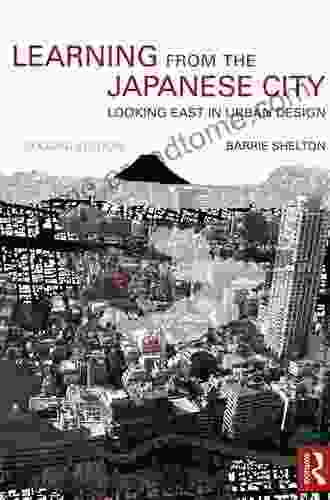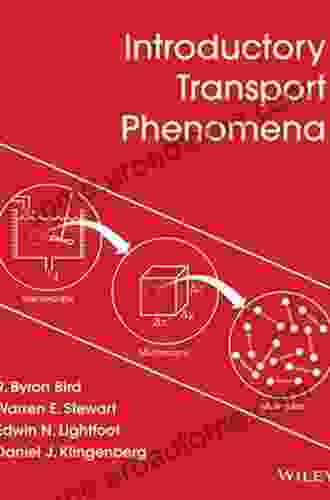Learning From The Japanese City: A Comprehensive Guide to Urban Planning and Design

4.8 out of 5
| Language | : | English |
| File size | : | 17379 KB |
| Text-to-Speech | : | Enabled |
| Screen Reader | : | Supported |
| Enhanced typesetting | : | Enabled |
| Word Wise | : | Enabled |
| Print length | : | 203 pages |
Japan is a country renowned for its innovative and vibrant cities. From the bustling metropolis of Tokyo to the historic streets of Kyoto, Japanese cities offer a unique blend of traditional and modern architecture, efficient infrastructure, and a high quality of life. In recent years, there has been a growing interest in the principles of Japanese urbanism as cities around the world seek to create more livable, sustainable, and beautiful environments.
This comprehensive guide explores the key principles of Japanese urban planning and design. We will examine the historical, cultural, and economic factors that have shaped the development of Japanese cities. We will also discuss the specific design techniques and practices that have made Japanese cities so successful. By learning from the Japanese example, we can create more livable, sustainable, and beautiful cities for the future.
Historical and Cultural Influences on Japanese Urbanism
The development of Japanese cities has been shaped by a number of historical and cultural factors. These include:
- Geography: Japan is a mountainous country with a limited amount of flat land. This has led to the development of compact, high-density cities.
- Climate: Japan has a humid subtropical climate with hot summers and cold winters. This has influenced the design of Japanese buildings and public spaces.
- Culture: Japanese culture places a high value on community and cooperation. This is reflected in the design of Japanese cities, which often feature public spaces and communal facilities.
In addition to these historical and cultural factors, the development of Japanese cities has also been influenced by economic factors. Japan has a long history of economic growth and development. This has led to the construction of new cities and the expansion of existing ones.
Principles of Japanese Urban Planning and Design
Japanese urban planning and design is based on a number of key principles. These include:
- Compactness: Japanese cities are typically very compact. This helps to reduce traffic congestion and pollution, and it also makes it easier to walk and bike around the city.
- Mixed-use development: Japanese cities often feature a mix of residential, commercial, and industrial uses. This helps to create vibrant and livable neighborhoods.
- Public transportation: Japanese cities have excellent public transportation systems. This makes it easy to get around without a car.
- Open space: Japanese cities often feature a number of open spaces, such as parks and gardens. This helps to improve the quality of life for residents.
- Sustainability: Japanese cities are committed to sustainability. This is reflected in the design of buildings and infrastructure, as well as in the city's transportation and energy policies.
Specific Design Techniques and Practices
In addition to the general principles outlined above, Japanese urban planning and design also includes a number of specific design techniques and practices. These include:
- Narrow streets: Japanese streets are typically narrow, which helps to slow down traffic and create a more pedestrian-friendly environment.
- Small block sizes: Japanese cities often have small block sizes, which helps to create a more intimate and walkable environment.
- Traditional architecture: Japanese cities often feature traditional architecture, which adds to the city's unique character and charm.
- Public art: Japanese cities often feature public art, which helps to create a more vibrant and stimulating environment.
Case Studies of Successful Japanese Cities
There are many successful examples of Japanese urban planning and design. Some of the most notable include:
- Tokyo: Tokyo is the capital of Japan and one of the most populous cities in the world. Despite its size, Tokyo is a very livable city with excellent public transportation, open spaces, and a vibrant culture.
- Kyoto: Kyoto is a historic city that was once the capital of Japan. Kyoto is known for its beautiful temples, gardens, and traditional architecture.
- Osaka: Osaka is a major commercial and industrial center in Japan. Osaka is known for its vibrant nightlife, shopping, and food.
Learning From The Japanese Example
There is much that we can learn from the Japanese example of urban planning and design. By applying the principles and practices of Japanese urbanism to our own cities, we can create more livable, sustainable, and beautiful environments for the future.
Here are some specific ways that we can learn from the Japanese example:
- Make our cities more compact: We can make our cities more compact by reducing sprawl and increasing density. This will help to reduce traffic congestion and pollution, and it will also make it easier to walk and bike around the city.
- Promote mixed-use development: We can promote mixed-use development by allowing different types of uses in the same area. This will help to create vibrant and livable neighborhoods.
- Invest in public transportation: We can invest in public transportation by building new lines and stations, and by making fares more affordable. This will make it easier to get around without a car.
- Create more open space: We can create more open space by building new parks and gardens, and by preserving existing green space. This will help to improve the quality of life for residents.
- Adopt sustainable practices: We can adopt sustainable practices by building energy-efficient buildings, using renewable energy sources, and reducing waste. This will help to protect the environment and create a more sustainable future.
By learning from the Japanese example, we can create more livable, sustainable, and beautiful cities for the future.
Japanese cities are a model for urban planning and design. By applying the principles and practices of Japanese urbanism to our own cities, we can create more livable, sustainable, and beautiful environments for the future.
Call to Action
If you are interested in learning more about Japanese urban planning and design, I encourage you to read this book. This book provides a comprehensive overview of the key principles and practices of Japanese urbanism. It is essential reading for anyone who is interested in creating more livable, sustainable, and beautiful cities.
4.8 out of 5
| Language | : | English |
| File size | : | 17379 KB |
| Text-to-Speech | : | Enabled |
| Screen Reader | : | Supported |
| Enhanced typesetting | : | Enabled |
| Word Wise | : | Enabled |
| Print length | : | 203 pages |
Do you want to contribute by writing guest posts on this blog?
Please contact us and send us a resume of previous articles that you have written.
 Book
Book Novel
Novel Page
Page Chapter
Chapter Text
Text Story
Story Genre
Genre Reader
Reader Library
Library Paperback
Paperback E-book
E-book Magazine
Magazine Newspaper
Newspaper Paragraph
Paragraph Sentence
Sentence Bookmark
Bookmark Shelf
Shelf Glossary
Glossary Bibliography
Bibliography Foreword
Foreword Preface
Preface Synopsis
Synopsis Annotation
Annotation Footnote
Footnote Manuscript
Manuscript Scroll
Scroll Codex
Codex Tome
Tome Bestseller
Bestseller Classics
Classics Library card
Library card Narrative
Narrative Biography
Biography Autobiography
Autobiography Memoir
Memoir Reference
Reference Encyclopedia
Encyclopedia Ben Watson
Ben Watson Jewell Parker Rhodes
Jewell Parker Rhodes Thomas Singer
Thomas Singer Belinda Rathbone
Belinda Rathbone Diana Conolly Carew
Diana Conolly Carew Katrina Goldsaito
Katrina Goldsaito Zan Fraser
Zan Fraser Bennie Lindberg
Bennie Lindberg Emma Jolly
Emma Jolly Austin James
Austin James Jock Mcculloch
Jock Mcculloch Aylmer Johnson
Aylmer Johnson Benjamin Zachariah
Benjamin Zachariah Ben Miller
Ben Miller Barbara Moore
Barbara Moore Terri Blackstock
Terri Blackstock Jonathan Boyarin
Jonathan Boyarin Valentino Braitenberg
Valentino Braitenberg Eugenio Nappi
Eugenio Nappi B Kirwan
B Kirwan
Light bulbAdvertise smarter! Our strategic ad space ensures maximum exposure. Reserve your spot today!
 Ernest ClineFollow ·18.6k
Ernest ClineFollow ·18.6k Allen GinsbergFollow ·6.5k
Allen GinsbergFollow ·6.5k Rod WardFollow ·16k
Rod WardFollow ·16k Devin RossFollow ·8.1k
Devin RossFollow ·8.1k Jeffery BellFollow ·15.1k
Jeffery BellFollow ·15.1k John GreenFollow ·19.3k
John GreenFollow ·19.3k Aron CoxFollow ·17.7k
Aron CoxFollow ·17.7k Anton FosterFollow ·10.8k
Anton FosterFollow ·10.8k

 Corey Hayes
Corey HayesEasy Delicious Recipes To Heal The Immune System And...
: The Cornerstone...

 Cody Russell
Cody RussellMastering Medical Terminology: A Comprehensive Guide for...
Navigating the...

 Ibrahim Blair
Ibrahim BlairBeat Cancer Symptoms: Your Essential Guide to Symptom...
Are you struggling with the debilitating...

 Finn Cox
Finn CoxHow to Be the Best at Work and Still Have Time to Play:...
Are you tired...
4.8 out of 5
| Language | : | English |
| File size | : | 17379 KB |
| Text-to-Speech | : | Enabled |
| Screen Reader | : | Supported |
| Enhanced typesetting | : | Enabled |
| Word Wise | : | Enabled |
| Print length | : | 203 pages |
















